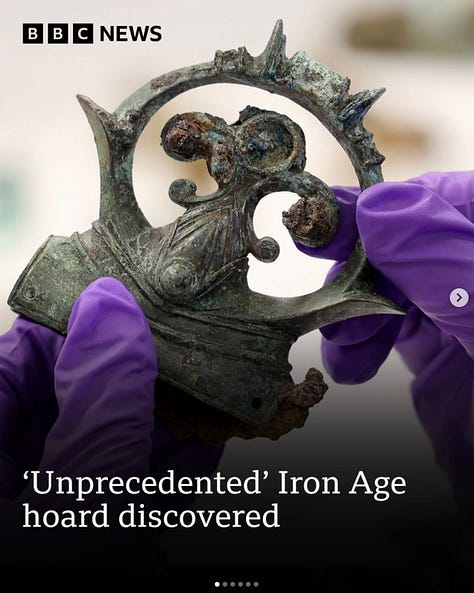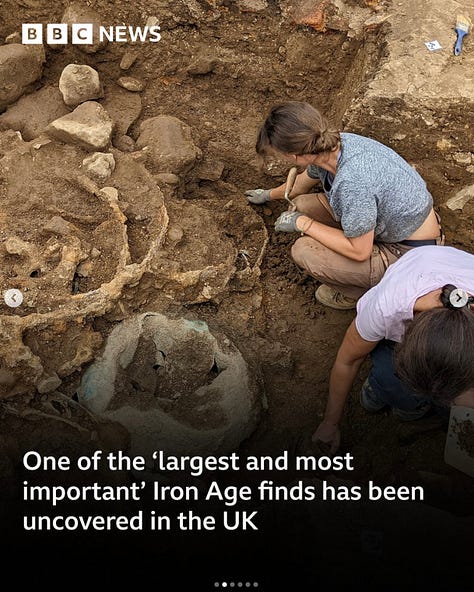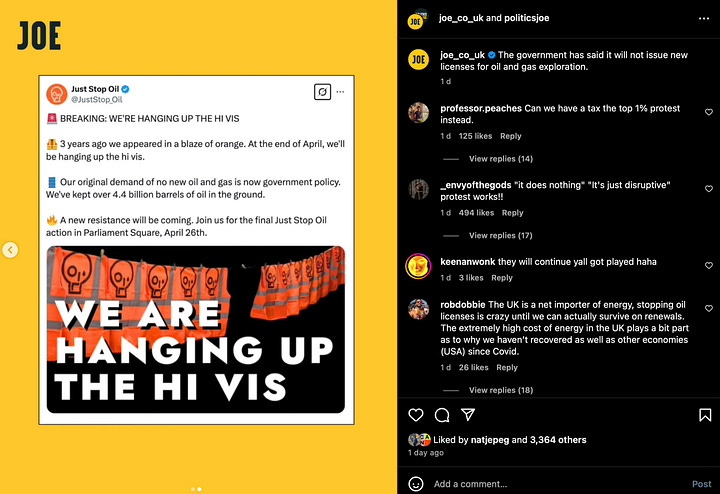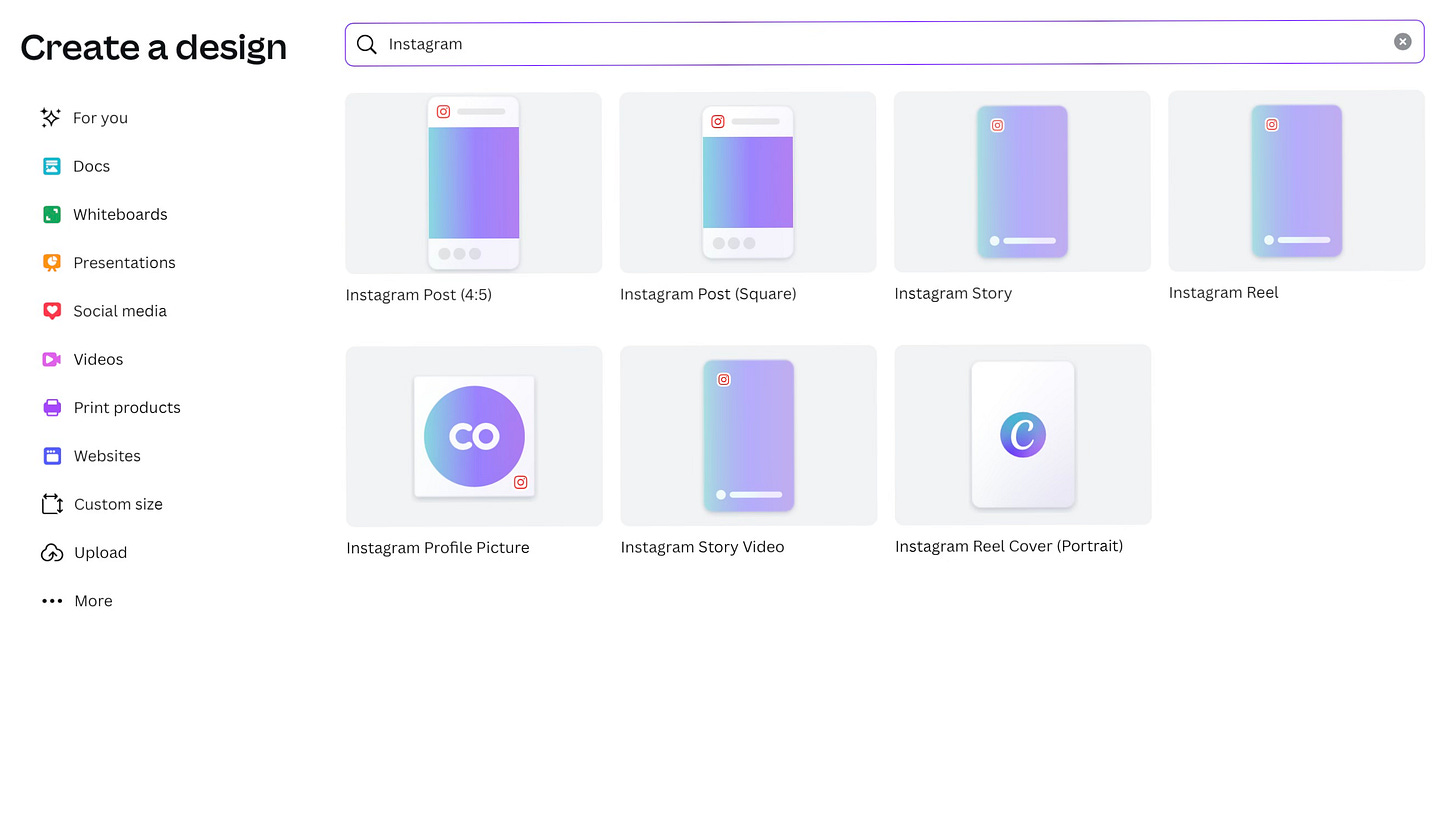The Carousel Post: An Overview
Paul Bradshaw, author of The Online Journalism Handbook, suggests that, in order to best function in a rapidly evolving field, an online journalist must be fundamentally adaptable as, in his words: “There’s always something new to learn”.
A changing landscape
In their 2024 report into news consumption habits in the UK, Ofcom revealed that more than half of over-16s accessed news via a social media platform.
Similarly, as highlighted in the Reuter’s Digital News Report 2024, Instagram has, over the last ten years, seen a 13% increase in the number of users that access the site with the explicit intent of consuming news.
Though the platform still remains behind Facebook, Youtube and WhatsApp in regards to the number of users accessing news content, it’s consistent uptick across the last ten years presents a trend the online journalist could, and should, exploit.
Instagram: the algorithm behind the platform
Despite its recent push towards video-driven content, Instagram is still principally recognised in the cultural zeitgeist as an image sharing platform.
With over 500 million daily users around the world, a single post to the site has the potential to reach a vast audience.
However, before an online journalist can successfully reach this audience, they must first take a cleaver to the sites proverbial Gordian knot: its notoriously tricky algorithm.
Speaking to the Press Gazette, ex-head of social at BBC News, Jeremy Skeet, proposed a formula for success, a formula which, as of March 2025, has amassed BBC News 29 million followers on Instagram.
He attributed the accounts high level of engagement to a specific formula of four ideas:
“laser-like-focus” on the audience
regular posting
explainer posts
using text on images
Though these pointers are certainly worthwhile considering, they do unfortunately fail to take into account BBC News’ previously established identity, one so huge it surely aided in the accounts success.
How then, can an up-and-coming online journalist unburdened by previous esteem, successfully break into the crowded space of news delivered via social media?
There are extensive articles available on to how best to deal with the increasingly vexatious algorithm, however, for brevity and clarity, an Instagram post from 2024 provides a simple, three word answer: the carousel post.
In the post, Adam Mosseri, the Head of Instagram and the man responsible for broad algorithmic decisions, stated that a carousel post, unlike a single image, will experience preferential treatment by the algorithm due to each image being classed as a separate piece of media.
Additionally, if a carousel post is seen by a user but not interacted with, Instagram will often reshow that user the same post but from the 2nd slide, encouraging additional engagement.
Finally, by adding music to the post, the carousel will be automatically, additionally displayed on the Reels tab, maximising potential reach.
Effectively then, the carousel post offers new-comers to the increasingly cramped, competitive world of online journalism a simple format for success.
What is a carousel post?
Offered on Instagram since 2017, a carousel post is a single post containing multiple (up to 20) slides, each with a different image or video.



If used correctly, ideally in conjunction with other principals of increasing engagement i.e Skeet’s suggestion of layering text over images, they can be an accessible, easily-digestible way of presenting complex stories (delivering key information relevant to understanding the basic components of a larger story)
Though they initially made up only 3-4% of posts on the site when first introduced, the format has steadily gained in popularity since, and now makes up 1/5th of all posts.
Creating an effective multi-image post
When creating a carousel for Instagram, there are three main points to consider: the aspect ratio of the post, what software is able to create a carousel post, and finally, the narrative you intend to tell with each slide.
Aspect ratio:
Three aspect ratios are most compatible for use on Instagram:
1:1 (square)
4:5 (portrait)
16:9 (landscape)
The best option for each story is dependant on the content of your story, and by extension, your images.
For example, if your story regards Mayor of West Yorkshire, Tracy Brabin, it would be prudent to (and a little silly not to) use an image of her in the carousel.
For the above image, a 16:9 landscape ratio would not be appropriate, as it would, rather oddly, make it appear to the viewer that Mrs Brabin is both made of pixels and wants for a torso.
Rather, a 4:5 aspect ratio would work best, allowing the viewer to grasp identity as well as context.
Once you have decided on a suitable aspect ratio for your images, and consequently the carousel post, there are multiple options for image editing and resizing.
Potential software:
Canva and Adobe Express are industry standard tools ideal for creating carousel posts, with both essentially providing the same/similar services.
Both provide handy, Instagram ready aspect ratio templates, that allow for the easy cropping of images.
In Canva, typing “Instagram” into the Create toolbar that runs along the left-hand side of a desktop browser brings up multiple different potential templates, each with an Instagram appropriate aspect ratio.
Adobe Express is much the same, with a similar left-hand side toolbar and search feature that allows for the specific discovery of Instagram post templates.
Both also offer carousel specific templates, something perhaps most convenient in a time-pinch.
Aside from minor differences, both pieces of software operate almost identically, giving users the ability to add text, crop images, duplicate pages (an essential tool for constructing a carousel post), and finally export their work, pre-packaged and ready for posting on Instagram.
The narrative of a post
The final aspect to consider when beginning work on a carousel post is the narrative, what is it that you are trying to communicate to your audience, and how can you do it effectively?


Take the above carousel from PoliticsJoe, a simple, 2 slide post focused on Just Stop Oil’s recent announcement.
Rather than creating a 20 slide behemoth for a story that can essentially be explained in a few sentences, the team at PolJoe smartly condensed it down to 2 slides: the first, a splashy, eye catching image of a protester featuring a concise, clear headline, the second, Just Stop Oil’s original statement on a canary yellow background.
It’s simple, effective and free from extraneous detail - detail readers can pursue further if it so pleases them.
The key narrative questions to ask when working on a carousel post are:
What are the basic components of the story summed up in one sentence?
What images could best illustrate that story?
Based off of the answers to the above questions, how many slides do I need?
Once these questions have been answered, the aspect ratio has been selected and the software is booting up on your laptop, you are ready to begin work on a carousel.









Good work. Thanks for sharing.